Three Foreign Films For Novices
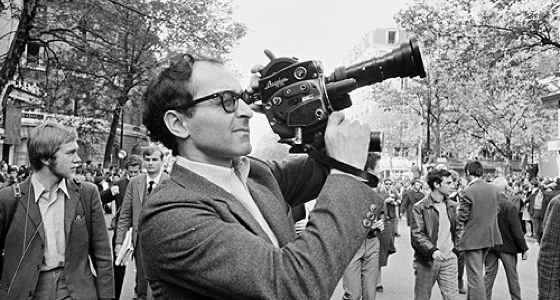
From South America to Saudi Arabia, Hollywood cinema has proved overwhelmingly popular and highly influential. The high-tech tales of The Avengers, Bruce Wayne, and the Fast and Furious crew have delighted countless viewers across the globe. In the United States, however, imported cinema often is relegated to select “art-house” theaters. Accomplished works hailing from France, Chile, and Iran are pushed to the side amid dismissive cries of “nobody should have to read a movie.” In the 1960s and ’70s, however, foreign films, whether from India, Italy, or Japan, were in vogue as much as the music of Bob Dylan or the politics of Angela Davis.
In recent years, foreign art-house cinema has fallen off the radar, enjoyed only by the most adventurous film connoisseurs. The same viewers who rave over Wes Anderson or Quentin Tarantino have often not seen a single frame of the Godard and Fellini classics that laid the foundation for contemporary independent film. In a large, diverse world of cinema, it is difficult to know where to begin. This article discusses three cinematic masterpieces, all from different eras and shot in disparate corners of the globe, that serve as prime introductions to the diversity and uniqueness of international cinema.
Pierrot Le Fou: The Craziest, Movie-Mad Romp That Tarantino or P.T. Anderson Never Made

There are few filmmakers more synonymous with the art-house ethos than Jean-Luc Godard. Between 1960, when his debut Breathless took the film world by storm, and 1967, when Godard’s ideological indulgences reached a breaking point in Week-End, the master of the “French New Wave” released at least a film per year. Almost without precedent, Godard’s cinema openly referenced the movie genres that transfixed him when he worked for the Paris film quarterly Cahiers du Cinema. Whether it was the social issue film (Vivre Sa Vie), film noir (Band of Outsiders), or science fiction (Alphaville), Godard’s work did not pretend to emulate reality so much as pay glorious tribute to cinema itself. Akin to Tarantino some three decades later, critics accused the French director of theft; but, as Godard once stated, “It’s not where you take things from-it’s where you take things to.”
This motto is best summed up in Godard’s 1965 effort Pierrot Le Fou. Released between the filmmaker’s relatively conventional early releases and radical later work, Pierrot Le Fou is a bridge between Godard’s entertaining and alienating impulses. The film is non-linear and full of surreal non-sequitors. The references to Hollywood genres are rampant, from noir to MGM musicals. What holds the film together are the stunning lead performances of Godard regulars Jean-Paul Belmondo and Anna Karina (then Godard’s wife), in addition to the film’s road trip structure and gorgeous French Riviera locales.
The movie takes off from a “lovers on the run” narrative familiar from noir gems like Nicholas Ray’s They Live By Night. This trajectory would become legion in countless “New Hollywood Pictures” in subsequent years, from Bonnie & Clyde and Badlands to the Tarantino-scripted Natural Born Killers. This overused angle still appears fresh in Pierrot Le Fou, and this is primarily due to the efforts of the film’s stars.
Just as Godard was essentially the brand name of European cinema in the ’60s, the idiosyncratic mug of Jean-Paul Belmondo was the unlikely face. In 1960, Belmondo’s quirky but commanding screen presence took center stage in two international successes, the aforementioned Breathless and Vittorio De Sica’s Two Women. In Pierrot Le Fou, Belmondo gives perhaps his most accomplished performance. Spouting philosophical queries and dropping constant references to literature, film, and music, Belmondo comes across as simultaneously the most knowledgeable and most soulful person in the room. As he hits the road, taking along a singular babysitter and part-time lover (the arresting, delightful, and enigmatic Karina), the film initially appears to be a conventional romance travelogue. The chemistry and witty dialogue propel the film, endearing it to viewers who are not used to the eccentric particulars of foreign cinema.
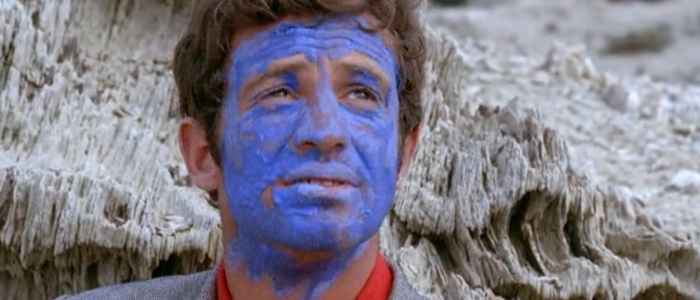
As the narrative progresses, however, Godard seems to subvert both cinema history and society simultaneously. Belmondo and Karina are not just the prototypical lovers on the run; they are the last lovers on the run. The film ends in a fiery, awe-inspiring climax that puts to shame the timid, half-hearted endings that are the norm in most mainstream works of cinema. The numerous deviations from convention fail to detract from the eye-catching cinematography, charismatic leads, and lively pace. Godard’s film was a turning point in his career, and it works as both an intimate portrait of a relationship (paralleling the director’s deteriorating marriage to Karina) and a free-wheeling lark. Pierrot Le Fou is a wondrous combination of genre pictures and avant-garde, and therefore serves as an ideal introduction to the strange world of French cinema.
Amores Perros– Like Pulp Fiction With a Heart-and Many Dead and Dying Dogs

In February 2015, the Mexican filmmaker Alejandro González Iñárritu won a Best Director Oscar for his experimental approach to a backstage drama in the satirical, polarizing Birdman. Unlike other international auteurs, Iñárritu’s transition from his native country to Hollywood was remarkably swift. His second film was the English-language drama 21 Grams starring Sean Penn and Naomi Watts, and only one title since then, 2010’s Biutiful, was filmed in his native Spanish. The fact that Iñárritu was able to transcend the confines of the “art house ghetto” so quickly is not at all surprising, judging by his debut film, 2000’s Amores Perros. Building off the intersecting storylines of Robert Altman, John Sayles, and Tarantino, but with a visceral intensity and flamboyance all his own, Iñárritu’s astonishingly confident masterwork is universal yet distinctly Mexican. This allows the work of cinema to speak to a wide cross-section of viewers, while simultaneously remaining true to the filmmaker’s roots.
The title, which, loosely, translates as “Love’s a Bitch,” uses three interrelated narratives to explore the cruel and manipulative ways in which humans treat both dogs and each other. This metaphor may seem strained and clumsy, but the unwavering conviction evident in the directing, writing, and acting sustain the picture throughout its 153-minute running time and numerous twists and turns. The three stories reveal all strata of life in the sprawling, notorious Mexico City; the presence of which truly acts as a key character in the proceedings. By melding the lives of chilangos from varying walks of life, Amores Perros threatens to become a preachy, symbolic drama about “the interconnectedness of all human beings,” akin to the subsequent Crash and the director’s own Babel. The film avoids this fatal attribute by leaving the loose ends untied and true to the messy ambiguities of the real world.
The three narratives are disparate in tone and style; the first, and longest, involves an illegal series of dogfights and an unsparing portrait of poverty in the DF’s slums. The fast pace, blazing hip-hop music. and presence of future international star Gael Garcia Bernal renders it the most accessible of the three sections. It is an excellent, if misleading, start to a film that soon defies expectations- and conventions. The middle sequence; a methodical, deliberate, and heart-wrenching portrait of an injured fashion model and her anguish over a missing puppy; is an indelible character piece, as well as a look at the opposite end of the economic spectrum in the famously divided Mexico City. The final section, involving a scruffy, aging hit man and his parade of dogs, combines the close attention to character of the second sequence and the brutal violence of the initial passage.
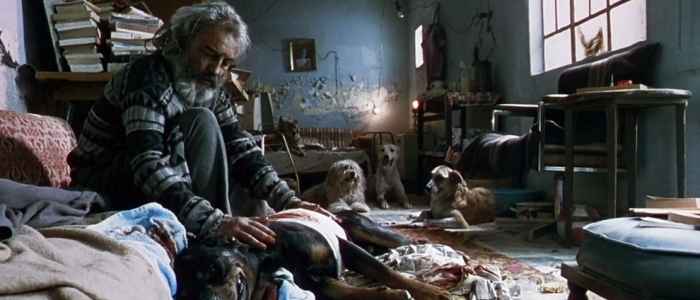
When taken together, the tripartite plot becomes a multi-faceted and deeply resonant snapshot of urban living. Unlike many foreign films, Inirritu refrains from presenting his native country as a tourist-friendly paradise. The grit, inequality, and danger of Mexico City are unflinchingly depicted, as well as the metropolis’ exotic charm and influx of diverse cultures. Unlike the majority of Altman or Tarantino’s output, Iñárritu is unafraid to be sentimental. The overwhelming humanity showcased by his fictional creations, regardless of gender, age, or income bracket, results in a film that can reach viewers of any locality and from every viewpoint. Iñárritu may have gone on to greater glory in Hollywood, but his crowning achievement remains a work of cinema as grotesquely violent as it is beautiful and humane.
Ugetsu: Just Your Average Feminist Samurai Ghost Story
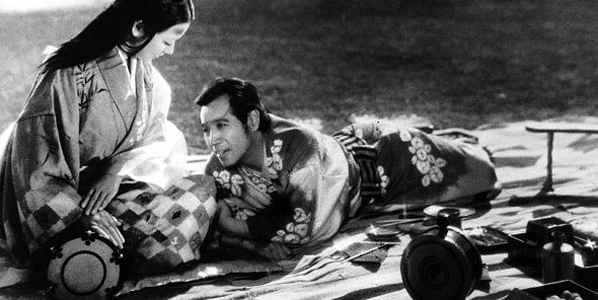
Before the 1950s, Japanese cinema was a largely insular phenomenon. Although Hollywood sensibilities had indeed pervaded Japan’s national cinema, this influence was muted, and the heavily acclaimed films in Japan were generally the most traditionally Japanese. In 1950, however, Akira Kurosawa’s experimental masterpiece Rashomon enraptured Western audiences, and a new mecca of cinema was born. Kurosawa continued to delight international viewers with his epic Seven Samurai and the pulsating, “Eastern Western” Yojimbo (1960) (which would in turn inspire the Sergio Leone “spaghetti Westerns”). The tranquil, subtle landscapes of the magnificent realist filmmaker Yasojiru Ozu, such as Tokyo Story (1953) and Early Summer (1951), proved less susceptible to importing; his work was not widely seen in the U.S. until the early 1970s.
Combining the subtlety of Ozu and the mythical majesty of Kurosawa was Kenji Mizoguchi, a favorite of the aforementioned Cahiers du Cinema. Although Mizoguchi’s prolific career extended from the silent era, it was not until his tragic prostitute tale Life of Oharu (1952) that he reached international audiences. The following year saw the release of Ugetsu, which won the coveted Golden Lion at the Venice Film Festival. It is widely considered Mizoguchi’s crowning achievement (although an argument could be made for his harrowing 1955 film Sansho The Bailiff). A mixture of historical epic, samurai picture, and horror, Ugetsu transcends labels, and manages to juggle these varied elements seamlessly through a dense yet swift running time.
Set in the late 16th Century, a notoriously fractious and violent time in Japan’s history, Ugetsu tells the tale of two foolish men whose behavior proves fatal. One, a potter named Genjuro, is motivated by greed and the desire to reward his wife financially rather than through warmth and affection. The other, Genjuro’s brother Tobei, is a lowly farmer intent on becoming a samurai, despite the protests of his wise, independent wife. This fable-like plot may seem like a simple morality tale, but the complex, nuanced screenplay and fluid, masterful direction transcend the inherent limits of moralistic narratives. This apparent realist drama morphs into a supernatural tale when Genjuro finds himself caught in the web of a seductive ghost. The horror aspects of Mizoguchi’s film are subtle, sinister, and convincingly otherworldly, adding yet another layer to the complex, intricate narrative.
For a film released in the 1950s (and set in the 16th Century) Ugetsu offers a surprisingly progressive portrait of women. From Tobei’s recalcitrant wife to the headstrong spirit, the female characters are self-aware, refusing to be passive and submissive. The two male protagonists, however, are depicted as being blinded by greed and ambition, failing to exercise the common sense their better halves exhibit intuitively. As it is a film released some 62 years ago, Ugetsu is not without its dated, stilted, or melodramatic moments. Yet, in its modern view of gender, eclectic genre influences, and astonishingly assured direction, Ugetsu is truly a timeless, universal work of cinema. The black and white cinematography and subtitled English may admittedly deter some viewers.
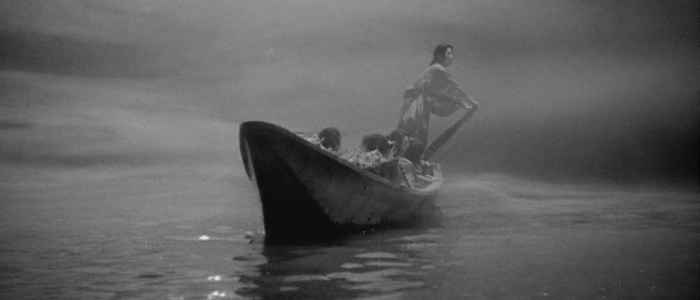
Despite being in color, both Pierrot Le Fou and Amores Perros have the potential to similarly alienate potential audiences. The experimental leanings and exoticism of all three cinematic works may seem forbidding to those raised on slick, safe Hollywood product. However, for those with an open mind, Ugetsu, Amores Perros, and Pierrot Le Fou are among the countless international films that will transport viewers to unknown and enchanting worlds.
Works Cited
Brody, Richard. Everything Is Cinema: The Working Life of Jean-Luc Godard.
Metropolitan Books, 2008.
McNab, Geoffrey. “Pretentious, Nous?” The Guardian, 2001.
Romney, Jonathan. “Amores Perros: A Critique.” The Guardian, 2000.
Sugimoto, Mike. “Rashomon, After Life, and Japanese Film Narratives of Remembering.” Japanese Film Review, 2003.
Thomas, Kevin. “A Closer Look at a Japanese Master.” Los Angeles Times, 1997.
What do you think? Leave a comment.











What makes Ugetsu different is that it doesn’t even play for the same elements of human nature as most other films. This is something I love about it.
Mexican films are not very common in Europe, and Iñárritu has become a certain sign of quality.
Brilliant dramas.
I have understand that Godard’s movies don’t have a sense, a clear story or a message. They are worth for what they are worth and their scenes and images are worth for what we see and nothing more which means very little for me.
“Los Olvidados” is another great Mexican drama worth checking out
I loved reading this, while i am not familiar with the films I have already added them to my list for the next week.
I’m a fan of Pierrot Le Fou along with some of Godard’s other French New Wave films. If I could written this article, I might have included one of Ingmar Bergman’s films.
Ugetsu is an enigma of a film.
Amores Perros is gritty and intense work of art.
Pierrot Le Fou seems to have been an inspiration for later Japanese animation (notably “Ghost in the Shell” and “Cowboy Bebop”) for reasons that are completely unclear to me.
Good list but with Pierrot, I found very little about the plot personally appealing. During the course of the set-up of the film, there is little justifiable reason provided by the filmmaker for the viewer to *want* to follow these characters’ lives together as the film does, in such dull and aimlessly detailed dialogue.
City of God is also a great foreign language film. I am surprised it is not in this list.
Fantastic list of films.
I loved all three of these movies from the word go!
Alejandro Gonzáles Iñárittu makes some of the most compelling movies.
Nouvelle Vague is one of the most famous movements in film history and Jean-Luc Godard is one of the most famous of this movement,
a compelling article. two of the three sound interesting enough that I’ll probably add them to my queue. I’ve taken a class or two in film history so some of the topic was mildly familiar though the films specifically were not.
Amores perros is an important film for the 21st century. Best of the trilogy.
in short if you haven’t seen…
Cinema Paradiso, Motorcycle Diaries, Amelie, Pan’s Labyrinth
make haste.
The strengths in this list really come from the secondary material you offer; I’d be reluctant to show any of the main titles you mentioned to any “true” novice to foreign film, precisely because of the nuance that accompanies variation in narrative structure, but some of the other titles you reference for each director might be ideal first stops.
“Pierrot le Fou” is a excellent movie!
Have always been reluctant towards foreign movies or at least movies which require reading subtitles, but have lately watched a couple of really great ones. Have been meaning to check out some Godard and more Inarritu after Birdman. Thanks for this article.
“The Separation” has been one of those foreign films I’ve been meaning to sit down and watch and finally did. I want to make it a habit to, at the very least, watch the films nominated for the Oscar for Best Foreign Film before the awards ceremony each year. The Academy Awards is a great way for the everyday film-watcher to be introduced to the beauty and artistry of foreign film.
What about Force Majeure? Along with Wild Tales it’s the best movie of the decade
For all you marital-art enthusiasts who want films less than 10 years old: The Raid: Redemption (2011), Yip Man (2008), and… uh… The Raid 2 (2014).
Amores Perros is a great movie. It is a great representation of Mexico’s three main social classes and struggles.
Many people in Mexico did not like this movie. I think because it is too much of a good depiction of the violence, inequality, poverty in Mexico.
Well, thanks for giving me titles to add to my To Watch list. Too sad, they didn’t appear in Netflix streaming. But I’ll check them out.
Great watch list for people trying to get more into classic cinema! The relations you draw to Tarantino and PT Anderson are interesting, I hadn’t thought about that especially in the case of Pierrot.
This is an interesting list. I’ve recently become more interested in foreign cinema, thank you for the recommendations!
These all sound so neat. I’ve never heard of them. Thanks for the rec list!
Amorres Perros was a beautiful film although I could not stand to see the dogs dying. The other two are not in my top picks and for novices I would recommend something a little lighter than Amorres Perros, Run LolA Run Perhaps because Although beautifully made, Amores Perros does have violence which may turn some viewers off. And while the stories are wonderfully interwoven, I would recommend something with a bit of comedy for the newbie.
The Japanese film looks rather interesting.